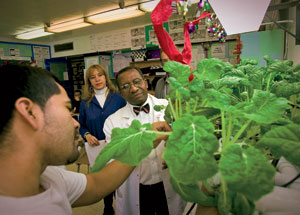Evidence-based this and evidence-based that: Every field seems to be talking about practices and programs that are evidence-based. The term is popping up everywhere, from medicine, to social work, to education, to physical therapy, to nursing. Where, you may well ask, does Cooperative Extension fit in? In an article appropriately titled: “Evidence-Based Extension,” in the Journal of Extension, Rachel Dunifon and colleagues explain it for you.
http://www.joe.org/joe/2004april/a2.php
The authors note that an evidence-based approach “entails a thorough scientific review of the research literature, the identification of the most effective interventions or strategies, and a commitment to translating the results into guidelines for practice.” Their point? That “extension can improve its use of research-based practice and also inform and advance the ongoing evidence-based work occurring in the scientific community. “





